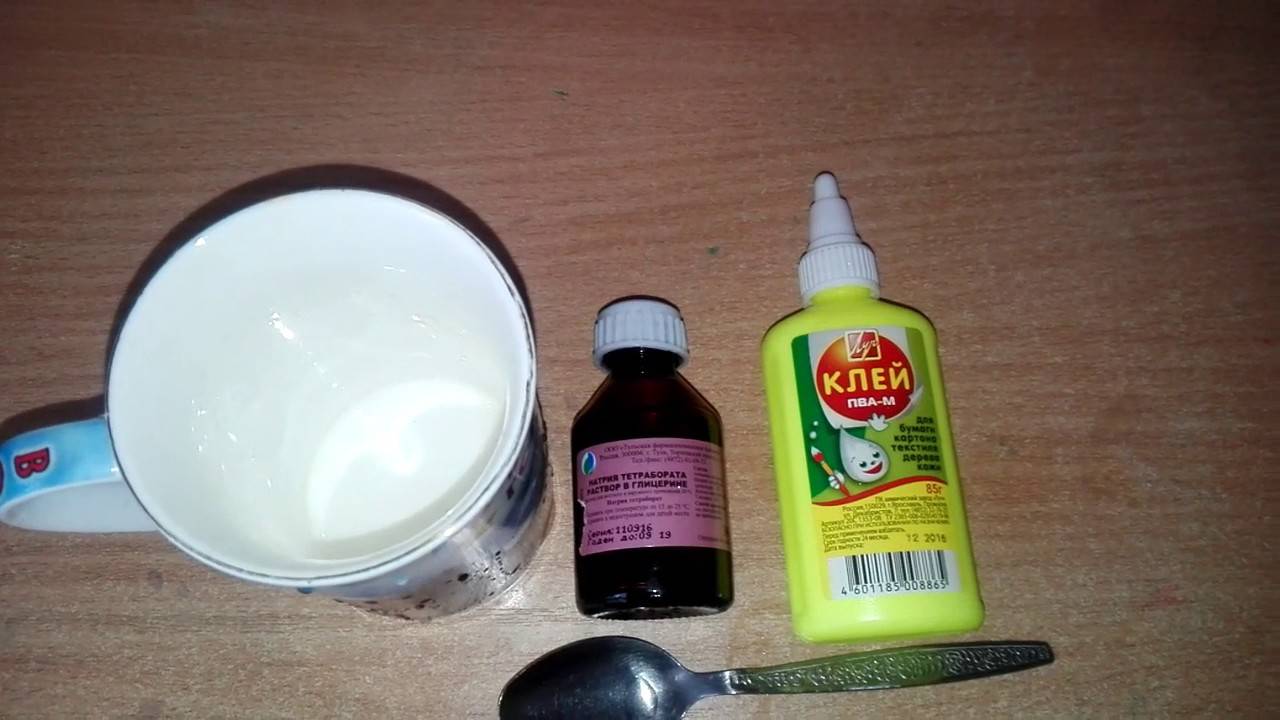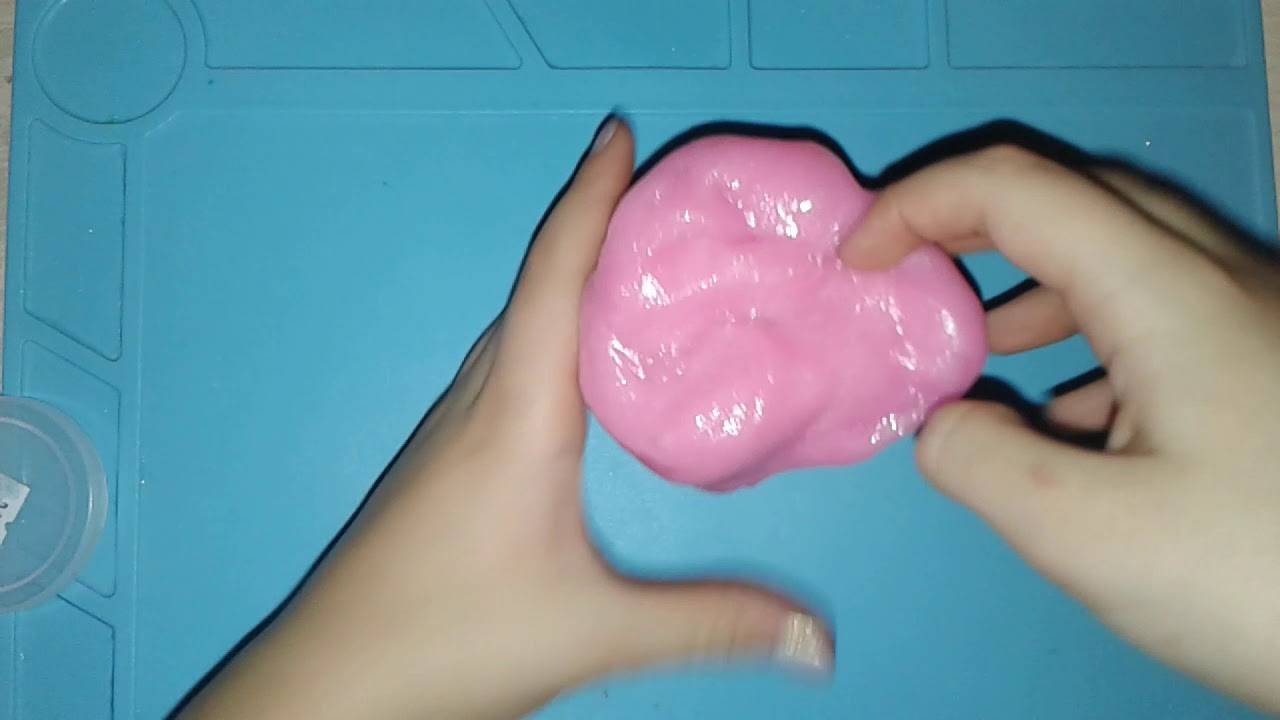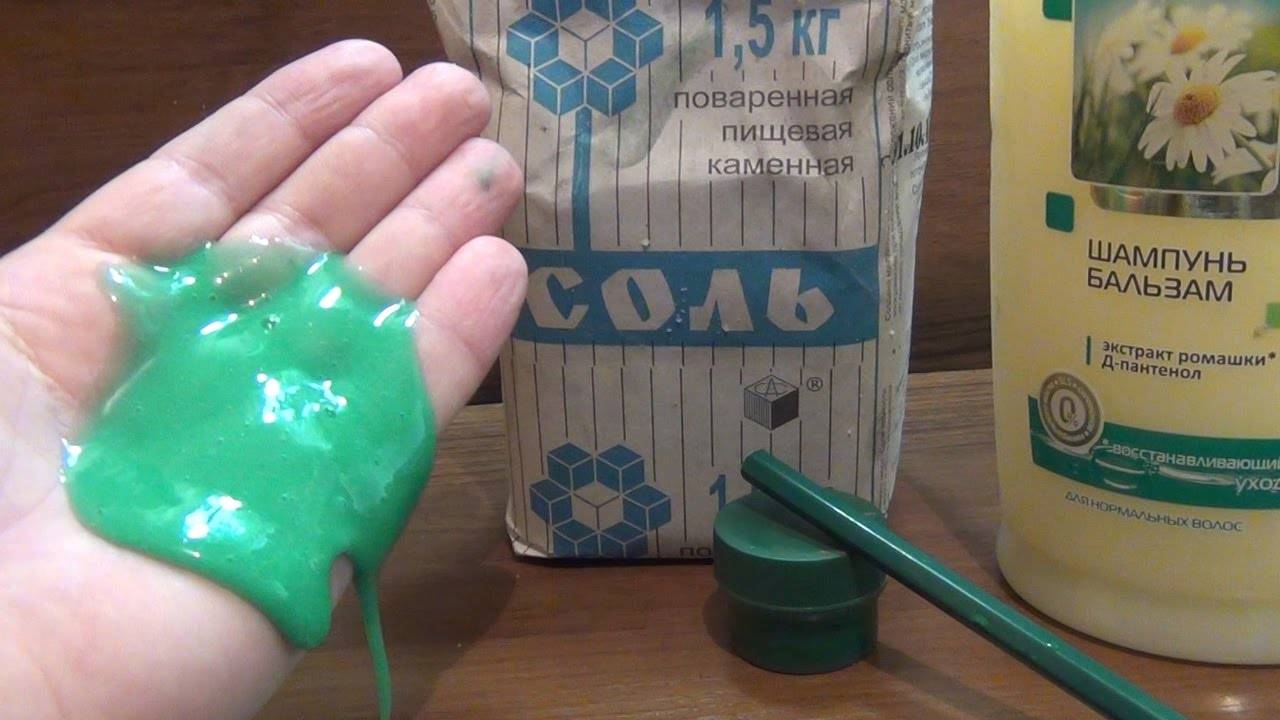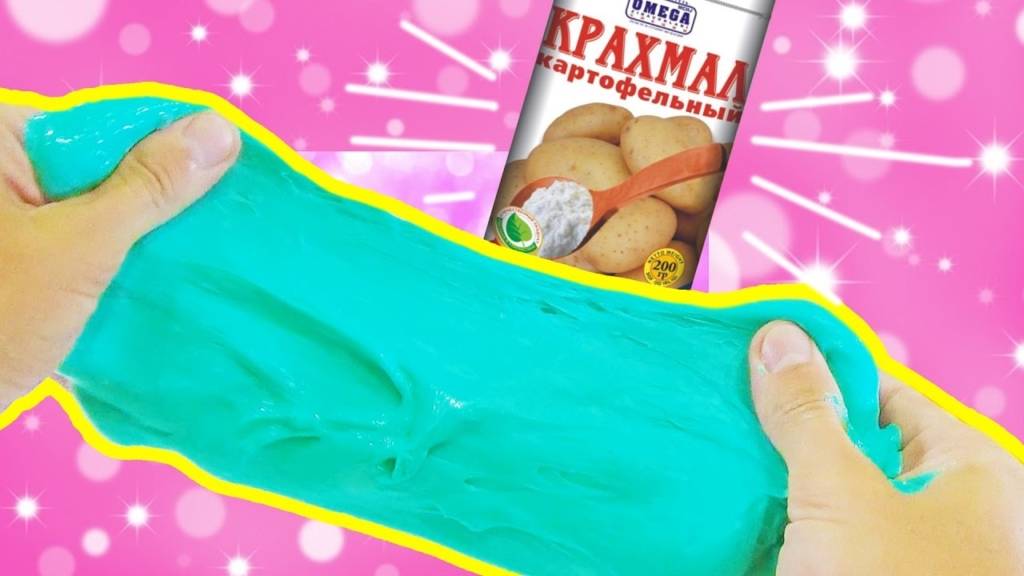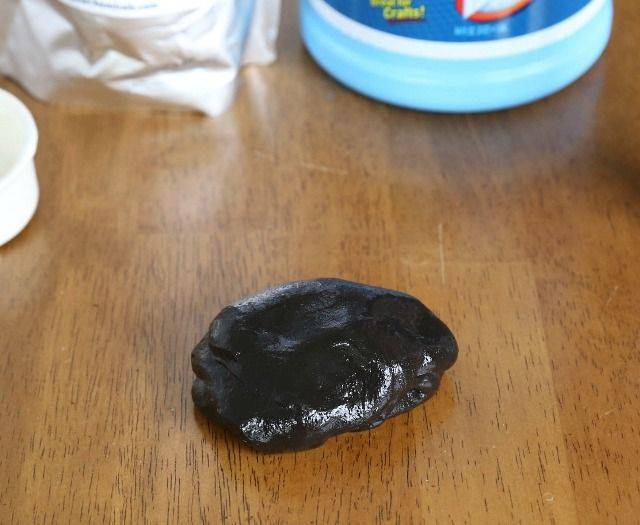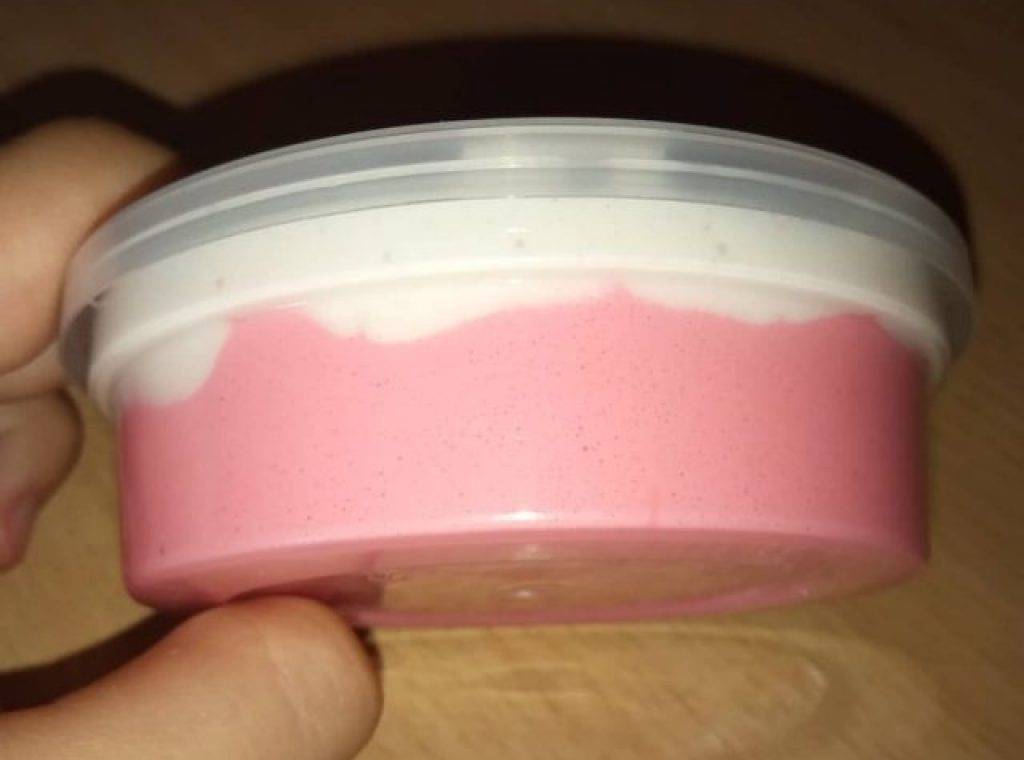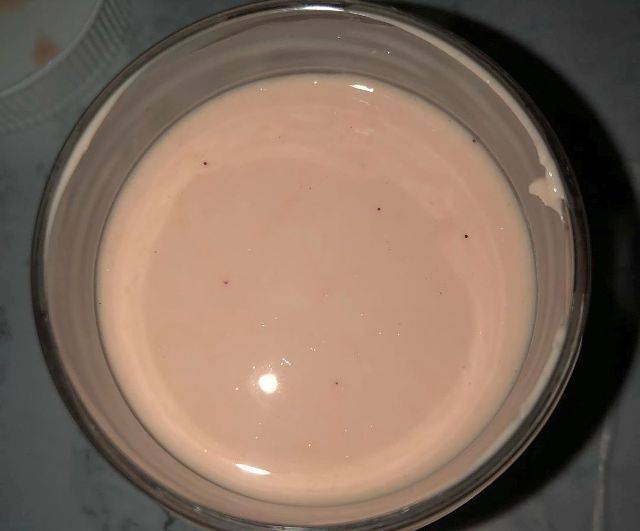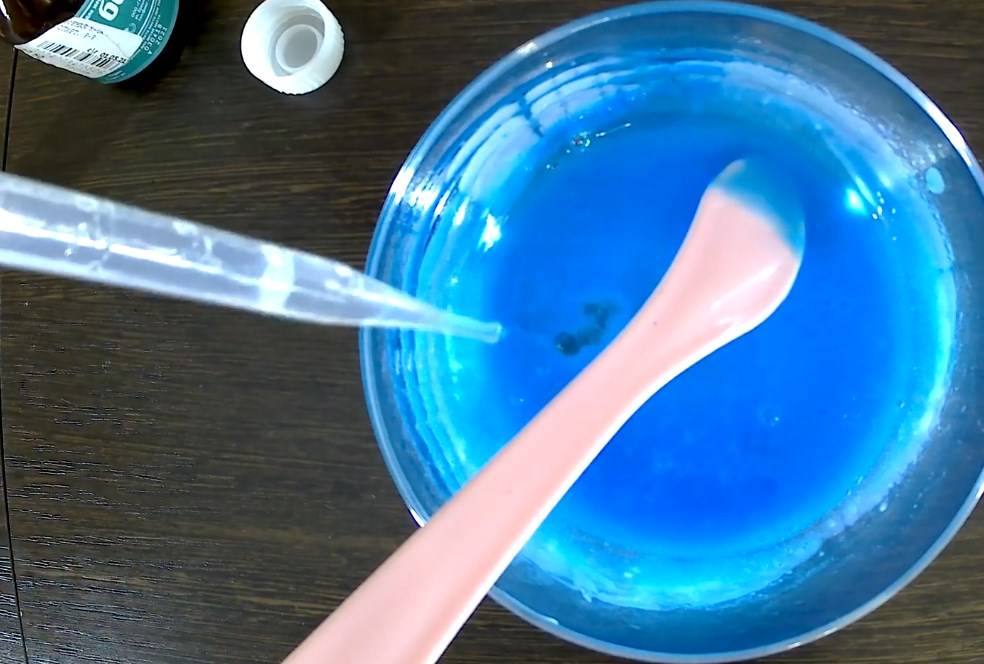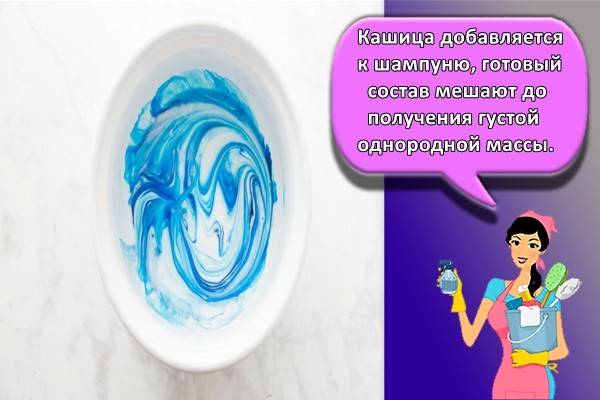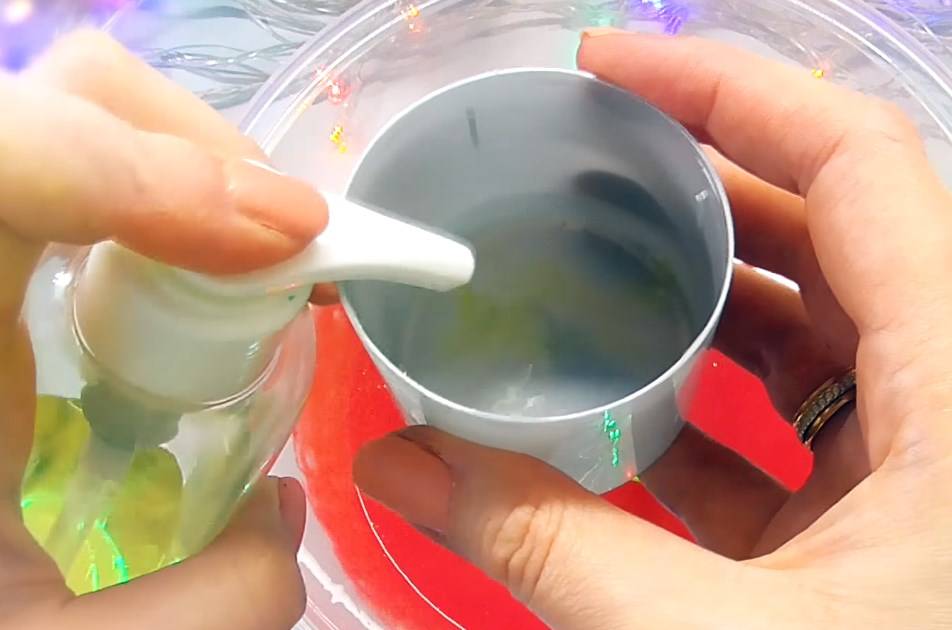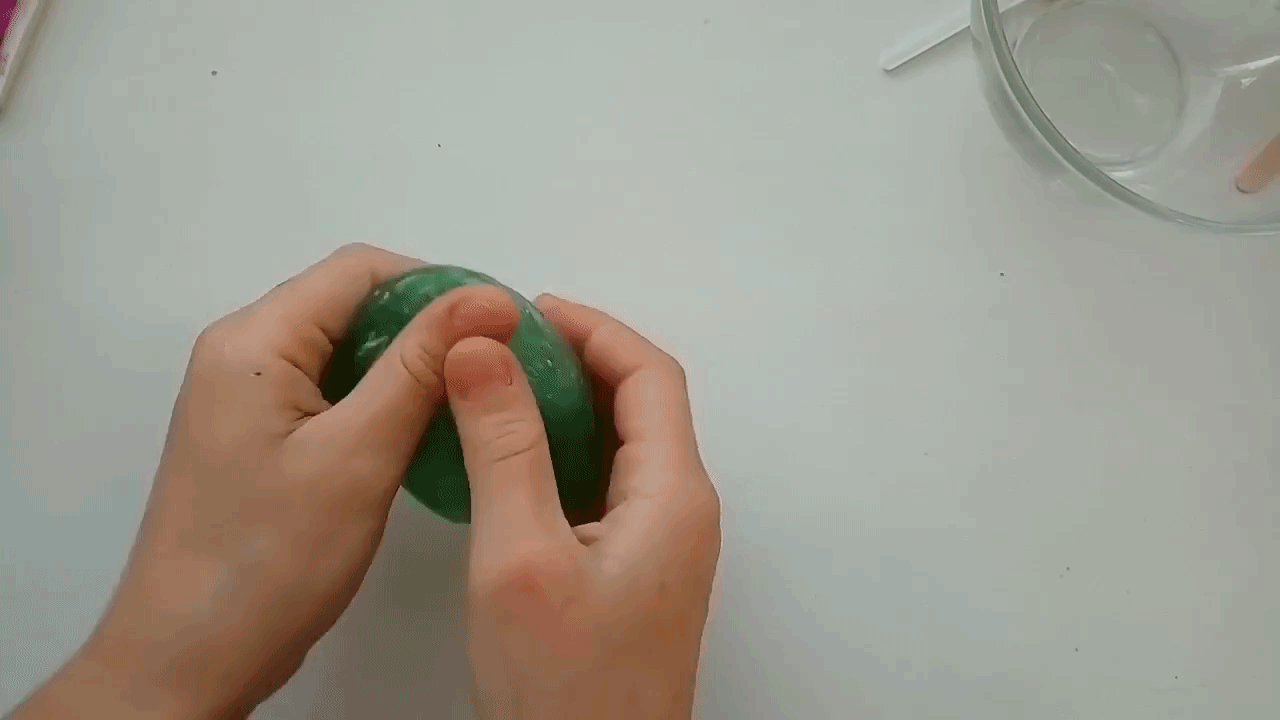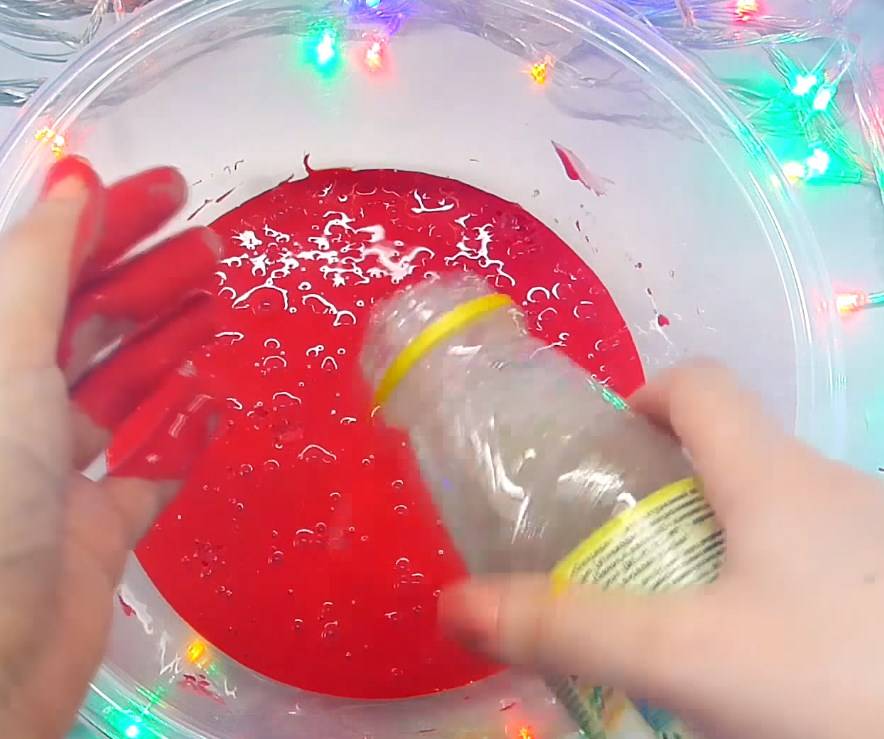Additional tips and tricks
To make the slime successful and serve as long as possible, use our recommendations:
- take care of your creation, try not to violate the rules of its storage, since its shelf life is not so long - about two to four weeks. Otherwise, this term can be significantly shortened;
- try not to stain the slime. Do not forget that originally, it was created in order to collect debris and dust from the computer and various surfaces. And his ability to stick anything to himself remains in full force;
- when you make a slime, it is better to open a window so that the room is well ventilated;
- wear rubber gloves if possible, especially if you have sensitive or problem skin;
- if the children help you, all of the above tips are mandatory.
We wish you will benefit from our tips and tricks, and that the slime you have made will bring a lot of joy and pleasure!
How to make a toy?
There are many slime recipes, and the most popular ones are using glue. In addition to PVA and stationery glue, you can also cook a toy from a glue stick. Despite its density, slimes with it turn out to be interesting.
The right ingredients
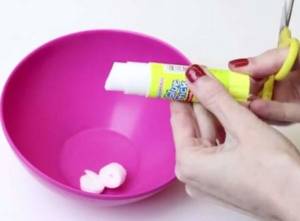 To prepare slime you will need:
To prepare slime you will need:
- 4 packs of 15 g stick glue;
- sodium tetraborate;
- dye (food grade, or ordinary watercolor paints will do);
- decorative elements (glitter, beads, sequins, etc.) - optional;
- glass / plastic dishes, wooden spoon.
In addition to sodium tetraborate, you can also use as an activator:
- boric acid;
- washing gel ("Persil", "Vanish", etc.);
- nasal drops "Naphtizin";
- salt or soda solution;
- starch;
- flour.
Manufacturing process
The slime is prepared quite easily:
- Remove the glue from the package, break it into small pieces and put in a bowl.
- Put the bowl in the microwave and heat up the glue for 15 seconds - you no longer need it, it melts quickly enough.
- Add dye and decorative elements to the melted and slightly cooled glue, mix well.
- Dissolve 2-3 drops of sodium tetraborate in a teaspoon of water, quickly add the solution to the glue and mix well until thickened.
The whole process of making slime takes no more than 10-15 minutes.
Important! During cooking, the mixture can become very hot, so you need to be extremely careful, and in no case should you leave the child alone while making the toy.
Tips & Tricks
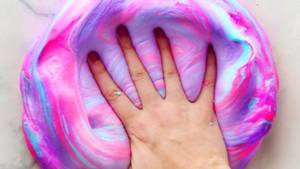
- If you plan to make a slime on a transparent base, you should not add flavoring to it: it will make the homemade toy cloudy. It is best to pour the fragrance on top after the bubbles have disappeared. After 3 hours, it will be absorbed and will not be visible from above.
- Before making the slime, you need to wash the container and disinfect it with an antiseptic.
- If the slime has melted or started to stick, it is necessary to add a thickener - boric acid to it.
- If the slime becomes hard or begins to tear, you can soften it with hand cream or briefly place the container with it under running hot water.
- If the slime begins to decrease with active play, you need to add a pinch of salt to it and mix thoroughly. Then you need to pour 2 teaspoons of water to the bottom of the container, shake and stir actively.
- Slimes are stored in a tightly closed jar in the refrigerator.
- Before playing with the slime, wash your hands to avoid getting debris into it.
- Slime is prepared only in a well-ventilated area.
- Children under 6 years old are not allowed to play with the jelly toy.
- You can not leave the slime under the bright sun: it will become liquid.
- To clean the toy from coarse dirt (lumps of earth or sand), you can use a syringe: pull the plunger out of the syringe, put all or part of the slime inside, insert the plunger and push. The slime will crawl through the needle hole, and large particles of dirt will remain inside.
Slime is suitable for playing for both children and adults: in some it trains hand motility, in others it relieves stress and improves mood. Anyone can create slimes, it is not necessary to purchase them in the store. Using the recipes from the article, you can make an unusual toy at home and experiment with it creatively.
PreviousThe simplest and most proven recipes for how to make slime at homeNextThe best paper slime recipes: how to make a fluffy and soft slime with your own hands?
Can a slime be made from this material and which one is suitable?
Slimes made from silicate or clerical glue are elastic. This glue is used to prepare transparent or "glass" slimes, in which sparkles, balls and beads look interesting. Silicate glue is often cheaper than PVA. Slime from it is stored for a couple of weeks. There are many recipes based on it, follow the instructions and everything will work out.
Reference! Silicate glue is made on the basis of alkaline solutions of glassy silicon salts - sodium and potassium silicates. Not every manufacturer is suitable for cooking.
Look for these brands of glue:
- Officespace. Usually sold in a round tube. The sticker is yellow and the title is highlighted in blue.
- Berlingo. The sticker is white, the title is highlighted in red.
- School format. Look for a package with a green sticker and the signature "Stationery Glue Roller". It is highlighted in blue.
- Erich Krause. The packages are different. Compared to other adhesives, it is more expensive for a smaller volume.
- Deli. It can be in yellow packaging and green with pictures.
- Hatber. Gray sticker with green rectangles. Liquid glue. Not suitable for simple slimes with two ingredients.
Soda based recipes
Below are some recipes for making baking soda slime.
Soda acts as the main thickener in our recipes. And we have to admit that it works "perfectly", flawlessly bringing the mass into a dense and viscous state. It can be added both dry and in the form of a solution, for which it is enough to mix 3 parts of soda powder and one part of water.

With glue
For work we need ingredients:
- two vessels for connecting components;
- 100 ml of water;
- 15 grams of baking soda;
- food coloring of any color.
Main steps:
- Pour 50 ml of water (half of the total volume) into one bowl, add glue and a few drops of dye there, stir until smooth.
- Pour the remaining 50 ml of water into another container, add soda there, and hammer.
- Then gradually, slowly, pour the soda mixture into the first solution in a thin stream, stirring constantly until it thickens.
- Now take this mass in your hands and knead it thoroughly.
Slime is ready, all the work took only about ten minutes.
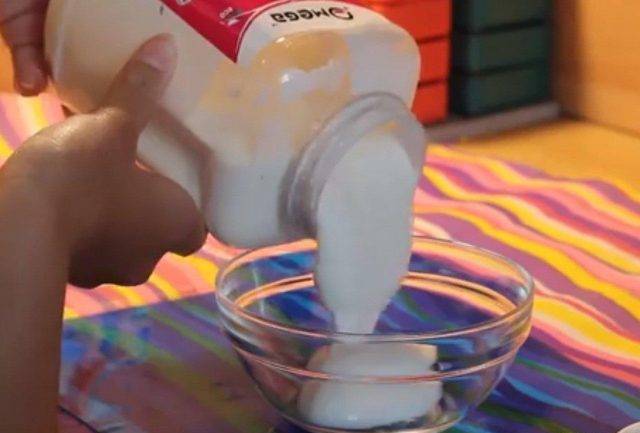
With toothpaste
To make a slime with the addition of toothpaste, we need two containers for mixing the components.
Main Ingredients:
- 25 ml of activator sodium tetraborate, or naphthyzine, or liquid for lenses;
- 5 grams of baking soda;
- 45 ml of toothpaste;
- half a teaspoon of salt;
- 100 ml warm water.
The main stages of manufacturing:
- First of all, combine the toothpaste and baking soda into a homogeneous mass and send the mixture to the refrigerator.
- After a quarter of an hour, mix water with salt and sugar and combine them with a mass of soda and paste from the refrigerator.
- Then just pour over all this with the activator of your choice, and let it absorb on its own (about 15 minutes).
- Then knead the slime thoroughly in the palms of your hands until it becomes dense and elastic enough (if it does not come to the desired state, add 25 ml of activator again, leave it to absorb and mash).
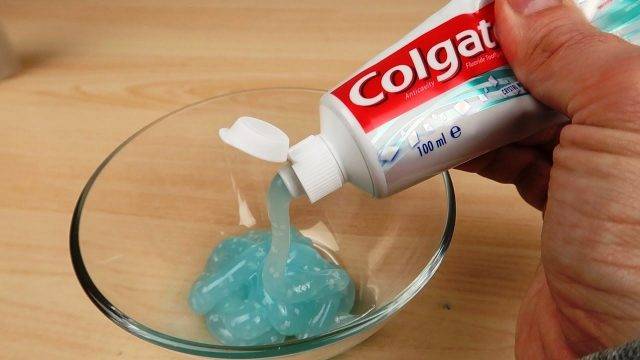
With shampoo
Slimes based on shampoo and soda are considered very popular and easy to make.
For work we need:
- shampoo of medium thickness and above 50 ml;
- 5 grams of baking soda;
- 0.5 cups cornstarch;
- 100 ml warm water;
- dye;
- 2 teaspoons of naphthyzine.
The main stages of manufacturing:
Mix the starch and soda, pour in half the water
Boil the rest of the water and slowly add it to the diluted starch, stirring constantly.
Add shampoo to the mixture, mix thoroughly and send to the refrigerator for ten minutes .. Now you have the knowledge of how to make slime from shampoo and soda.
Now you have the knowledge on how to make shampoo and soda slime.
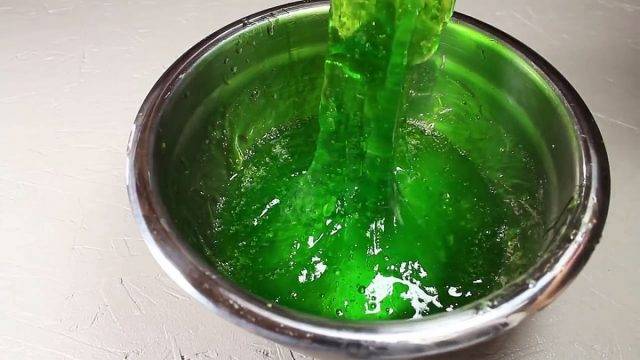
From "Fairy"
We offer a simple method for making slime. We need:
- 50 grams of "Fairy" (any dishwashing detergent);
- 15 ml of liquid for lenses;
- 25 grams of baking soda.
Of flour
Slimes made with flour are popular.
Main Ingredients:
- 3 tablespoons of baking soda;
- 100 ml of water;
- 150 grams of flour;
- dye;
- 15-20 grams of hand cream.
Cooking steps:
- Combine flour, baking soda and dye.
- Gradually add there first 50 grams of cold water, and then hot, stir.
- Pour hand cream into the mixture.
- Knead with your hands to the required density.
- Place in a cool place for an hour.

With PVA glue
Recipe for making slime based on PVA glue. You will need:
- incomplete teaspoon of baking soda;
- 35 ml of liquid for lenses;
- 100 grams of water;
- 65 ml of PVA glue.
Cooking method:
- Pour the lens liquid into the glue.
- Dissolve the baking soda separately in the water.
- Combine the above two solutions.
- Stir and knead until tender.
Enjoy your creation!
With water
The easiest way to make slime based on soda, water and glue.
Ingredient composition:
- 150 ml of water;
- 15 grams of baking soda;
- 50 ml of liquid glue.

Cooking method:
- Very carefully, in a thin stream, pour the glue into the water (in which the soda was previously diluted).
Carefully pick up the still too soft formation from the surface of the water, trying to protect it from fluctuations.
Transfer the resulting mass to another bowl and knead.
With glycerin
Consider the option of making a slime based on soda and glue with the addition of glycerin.
We need:
- 50 ml of PVA glue;
- 25 ml of water;
- 0.5 teaspoon of baking soda;
- dye;
- a tablespoon of glycerin (for fat content);
- a teaspoon of naphthyzine.
Cooking steps:
- We add all the components in order to each other, mixing thoroughly.
- Knead the mass well with your hands.
- If the mixture is thin, add more naphthyzine.
- Mix again until tender.
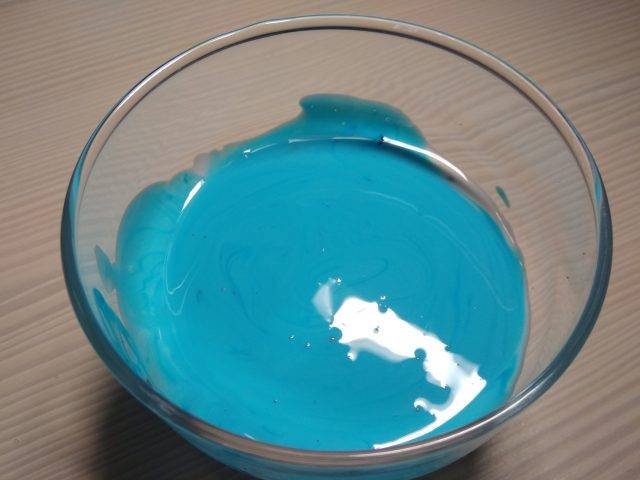
How to prepare a slime without borax and glue?
From shampoo and flour

- 1.5 tbsp is squeezed into the container. toothpaste.
- 2 tbsp is added. shampoo.
- Everything is mixed until the paste is completely dissolved.
- 2.5 tbsp flour is gradually poured out and stirred so that lumps do not form.
- The resulting mass must be kneaded in hands, sprinkled with water and kneaded again.
- The slime is ready to use.
With starch
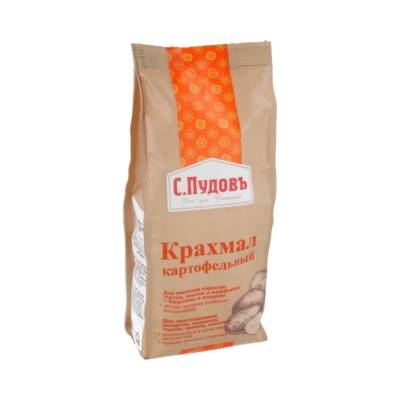
- 200 grams of starch are poured into the container.
- 100 ml is poured, everything is stirred until the lumps disappear.
- Add 100 ml of shampoo and dye.
- Everything mixes well.
- The resulting mixture must be covered with a lid or foil and put in the refrigerator for 12 hours.
With toothpaste
 For this recipe, a 2 in 1 shampoo (shampoo + rinse) is best.
For this recipe, a 2 in 1 shampoo (shampoo + rinse) is best.
- 30ml of shampoo is added to the dish.
- Put 1 tsp. toothpaste.
- Everything is mixed until the mass acquires a dense consistency.
- If the slime turned out to be liquid, you can put more toothpaste, if thick - shampoo.
- After cooking, the slime should be put in the freezer for 1 hour.
- After this time, the slime can be taken out of the freezer and start playing with it.
From plasticine

- Stir a pack of gelatin in cold water.
- After an hour, the mass must be brought to a boil over a fire.
- Plasticine must be kneaded with hands and mixed with water in a 2 to 1 ratio.
- The two mixtures must be combined together and mixed with a wooden spatula until smooth.
- The finished slime is sent to the refrigerator for 30 minutes.
Slime recipe: how to make?
Silicate glue is the most popular ingredient in slime preparation. It gives anti-stress strength and elasticity. In combination with sodium tetraborate, the thickest and softest slimes are obtained, which are pleasant to the touch.
The recipe is simple and will take the least amount of time. Before cooking, buy all the ingredients you need and prepare your workplace, treat it and your hands with an antiseptic. For your own safety, wear protective gloves and an apron, do not allow small children to create a toy.
Components and their proportions
Before purchasing ingredients, check their expiration date:
- silicate glue - 12 ml;
- sodium tetraborate - 1 tsp;
- supplements - optional (can be purchased in a special store or on the Internet);
- dyes or acrylic paint - optional.
Manufacturing procedure
 Use only unnecessary deep dishes, after making the slime, do not take food from it:
Use only unnecessary deep dishes, after making the slime, do not take food from it:
- Pour the correct amount of silicate glue into a bowl and add a little warm water. Stir until smooth.
- If you decide to use eyeshadow as decorations and additives, it's time to add them, crumbling in advance.
- Pour the sodium tetraborate and stir until a thick lump is obtained.
- Add sequins, sequins and beads.
- Color the toy with a couple of drops of dye and stir.
- Mash the anti-stress in your hands.
The entire manufacturing process will take no more than 10 minutes.
Storage rules for boric acid slime
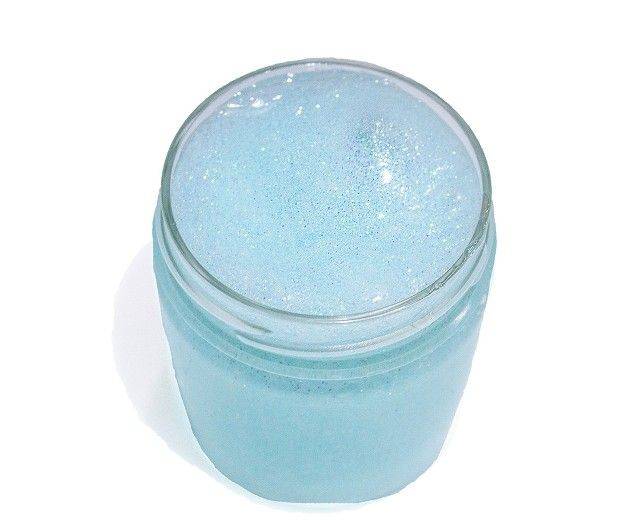
After making a boric acid slime without glue, it is important to pay attention to the correct storage of the finished product. To do this, you need an airtight container with a lid. Keep the toy in the refrigerator
Keep the toy in the refrigerator.
Slime needs to be looked after periodically. This will require pieces of plasticine, salt and water. Every day, the slime needs to be fed with a few pinches of salt, adding water and shaking the container after closing the lid.
If the boric acid slime starts to bubble without glue, put it in a jar and leave it for 4 days until a colored spot appears on the surface. Separate the emerging slime into another container.
With a long game, the slime loses its properties and shape, decreases in size. To fix it, add some salt and water solution.
If the slime is dirty, it should be washed from the dirt. Dispose of the toy immediately if it develops an unpleasant odor or mold, as it is no longer usable.
How to make boric acid slime without glue - watch the video:
What is this substance and what is it in the slime for?
Boric acid is a substance with weak acidity in the form of a powder or alcohol solution with a wide range of applications. This acid is used in the manufacture of slimes in order to give them the desired consistency and shape, as well as to prevent the slime from sticking to the hands.
As a rule, an alcohol solution is used to create a "toffee". Thus, boric acid acts as an activator (thickener) in lizun.
Important! Careless handling of boric acid affects skin health: it leads to burning, itching and chemical burns, so it is better to wear gloves before using it
Tips & Tricks
 In order for the new toy to only delight and bring a lot of positive emotions, you should use the simple recommendations and useful tips that are given below:
In order for the new toy to only delight and bring a lot of positive emotions, you should use the simple recommendations and useful tips that are given below:
- The finished slime must be stored only in a closed sealed container, otherwise it will dry out quickly and become unusable.
- It is not advisable to store a slime made of silicate glue in the refrigerator, since at low temperatures it becomes very dense and hard.
- If the slime turns out to be too dense and hard, then you can soften it by adding a few drops of glycerin.
- It is not recommended to play with a slime for more than 45 minutes a day.
- Slimes made of silicate glue should be periodically rinsed under warm running water, while the actions should be fast enough. In addition, a slime is a toy to which dust and dirt are quickly attracted, so it is advisable to wash your hands before playing with it.
Lizuns, or slimes, are a new hobby that not only children, but also adults are willingly interested in.
However, when making slimes by young children, it is important to remember that this must be done under the mandatory supervision of adults.
PreviousHow to make a slime from improvised means - soap and salt? Storing and caring for a toyNextEasy and simple - 5 ways to remove a slime from a child's hair
What other components can I add?
Will boric acid work?
These slimes click and crunch equally well.
Pay attention to concentration. Slime requires 3% acid
 Ingredients:
Ingredients:
- glue;
- boric acid;
- dye.
- We take the components "by eye". For 100 ml, glue goes a little less than 1 tsp. acid.
- Stir the acid and glue in a bowl for about 5 minutes. The slime thickens quickly.
- After mixing, add color as desired.
Further, a visual video about the manufacture of slime from silicate glue and boric acid:
With borax
 Borax looks like a white powder. Plays the role of an activator-thickener. For cooking:
Borax looks like a white powder. Plays the role of an activator-thickener. For cooking:
- Mix 250 ml hot water and ½ teaspoon borax.
- Cool it down.
This solution will replace sodium tetraborate. The recommendations are the same - do not add a lot of activator at once. The slime will thicken and you will need more glue to thin it.
With toothpaste
With it, snow-white slimes with a mint smell are obtained. You need a pasta without additives and dyes, clean hands, dishes and surfaces on which you will cook. If you take a paste with pigment or add a dye, the slime turns out to be delicate pastel colors.
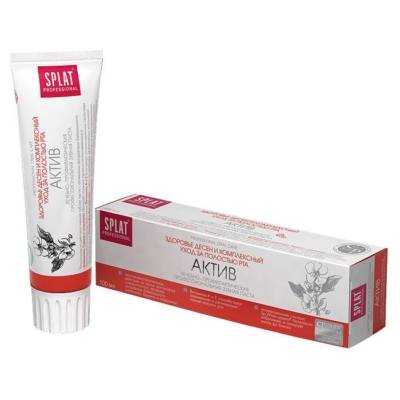 Ingredients:
Ingredients:
- glue;
- water;
- Toothpaste;
- sodium tetraborate.
- Squeeze 5-6 cm of paste from the tube. Add a little water, mix thoroughly until frothy.
- In a container, mix the glue and paste mixture with water. Add sodium tetraborate drop by drop, stirring gently each time.
- Knead the slime by hand until it stops sticking to your hands. It clicks well, but doesn't stretch well. Therefore, it is suitable for playing on the surface and in a jar.
With lens fluid
There is no point in buying this solution on purpose. From it, the slime does not acquire special properties. Use if it did not fit for direct use, got it by accident or as an experiment. The composition of the liquid for the lenses should contain sodium borate, boric acid. The ratio of glue and solution is about 15 ml of liquid per 100 ml of glue.
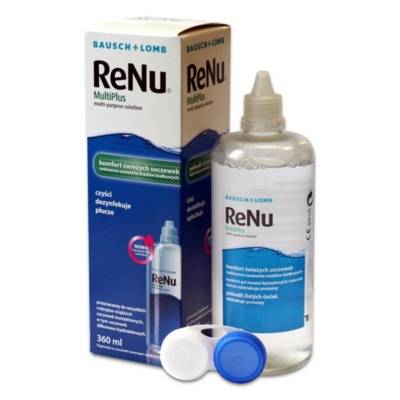 Ingredients:
Ingredients:
- glue;
- soda;
- contact lens solution;
- water.
- Mix the glue with a little water in a bowl.
- Add baking soda. For 100 ml of glue ½ teaspoon. Stir well to dissolve the particles.
- Add lens solution gradually. Mix thoroughly. Bubbles will appear in the mixture, it will begin to thicken.
- Remove the slime from the walls and finish cooking with your hands.
- Place in a container with a lid. If you let the slime brew for 2-3 days, bubbles will go out of it. It will become matte transparent, will stretch well into a thin film.
With alcohol
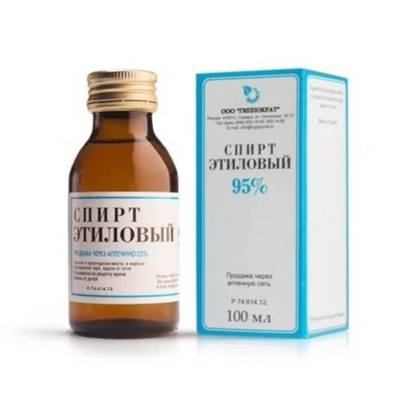 Take alcohol, strong alcohol or technical liquids in a 1: 1 ratio with glue. This slime is short-lived, hardens quickly. Alcohol dries out the skin of the hands. To avoid this, add shampoo or soap.
Take alcohol, strong alcohol or technical liquids in a 1: 1 ratio with glue. This slime is short-lived, hardens quickly. Alcohol dries out the skin of the hands. To avoid this, add shampoo or soap.
- Mix the rubbing alcohol and glue in a bowl.
- Add cold water. The mixture of alcohol and glue will collect into lumps or lumps.
- Pull the clots out of the water and knead them with your hands.
Ingredients for making slimes
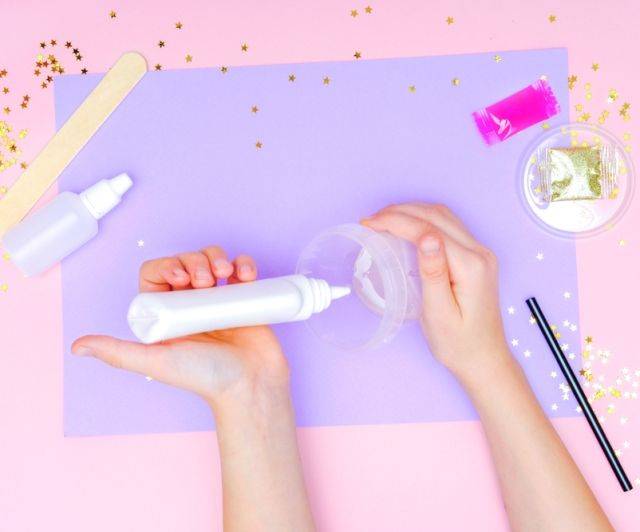
The easiest way to start making your first slime is from boric acid, sodium tetroborate or borax - related substances that can be easily found in any pharmacy. Reacting with the components of the liquid base slime (stationery or silicate glue, PVA, film mask, polyvinyl alcohol), they form crosslinked polymers that give the mass a viscosity and density, but at the same time keep it slightly fluid. Unlike more complex recipes using salt, air fresheners, or contact lens gel, there is very little chance for a beginner slime model to make a mistake. Simple chemical reaction: combine active substances in one container and watch.
Boric acid is especially popular with slimers: perhaps because of its special cheapness and availability. It comes to pharmacies either in the form of a solution already suitable for the production of slimes, or in the form of a white powder, over which you need to conjure up a little.
How to dilute boric acid for slime
- Take a glass bottle or vial with a tight screw cap.
- Combine boric acid powder and pure water in a ratio of 3-4 g per 100 ml.
- Stir, allowing the crystals to completely dissolve.
- Pour into a vial, seal, and store away from food, nosy children, and pets.
- Use as needed.
Note! Before diluting the boric acid for the slime, open a window to allow fresh air to enter the room. Vapors released during this process can be toxic. Is boric acid a health hazard? Depends on how responsibly you approach business
In the classification of toxic substances, a conditionally dangerous category 3 is assigned to it, which means: theoretically, it is possible to poison yourself with acid, but in practice you need to try hard for this.
However, as you know, once a year a stick fires, so it is necessary to take precautions. Is boric acid a health hazard? Depends on how responsibly you approach business
In the classification of toxic substances, a conditionally dangerous category 3 is assigned to it, which means: theoretically, you can get poisoned with acid, but in practice you need to try hard for this. However, as you know, once a year and the stick shoots, so it is necessary to take precautions
Is boric acid a health hazard? Depends on how responsibly you approach the matter. In the classification of toxic substances, a conditionally dangerous category 3 is assigned to it, which means: theoretically, you can poison yourself with acid, but in practice you need to try hard for this.
However, as you know, once a year and the stick shoots, so it is necessary to take precautions
How to work with acid:
- Ventilate the room and do not bend over the container while the powder is dissolved in water.
- Wear gloves to prevent chemical compounds from entering the bloodstream through an inconspicuous scratch or sore.
- If the solution accidentally gets on the mucous membrane, rinse the affected part of the body with plenty of water.
- Seriously carried away by the production of boric acid slimes at home, select a separate dish for their preparation and do not use it for food.
- Do not give ready-made slimes to children under 5 years old who find it difficult to explain why a funny contraption should not be tasted.
Slimes themselves are not dangerous, but to guarantee yourself peace of mind, it is better to get into the habit of washing your hands after playing with another slime. Then it will be possible not to guess whether microscopic particles of acid have settled on a sandwich prepared for a snack.
Handgum with the addition of toothpaste
You can make a slime without glue, but add shampoo to it. Any detergent is suitable here, but only thick enough
It is important to add baking soda, water and color. The procedure for making a slime includes the following steps:
- You need to take a container, preferably a food container or a glass cup.Pour in 5 tbsp. tablespoons of shampoo, 3 teaspoons of water and acrylic paint (a small drop).
- Stir the resulting composition and pour 2 teaspoons of boric acid into it. Add the same amount of soda.
- Stir until the composition is thick enough.
- Take the slime in hand and knead it well. The readiness of the product is determined by the fact that it does not stick to your hands. If this happens, then you need to put it in the refrigerator.
A similar option is slime with the addition of toothpaste. It is very easy to prepare, only paste is added instead of shampoo. Better to take a gel product. First, the paste must be heated in a steam bath for 15-20 minutes.
Add 1 tsp to the resulting mixture. soda and 2 tsp. activator. Stir the mixture. It remains to grease your hands with oil and knead the slime until it becomes elastic enough and does not tear.

